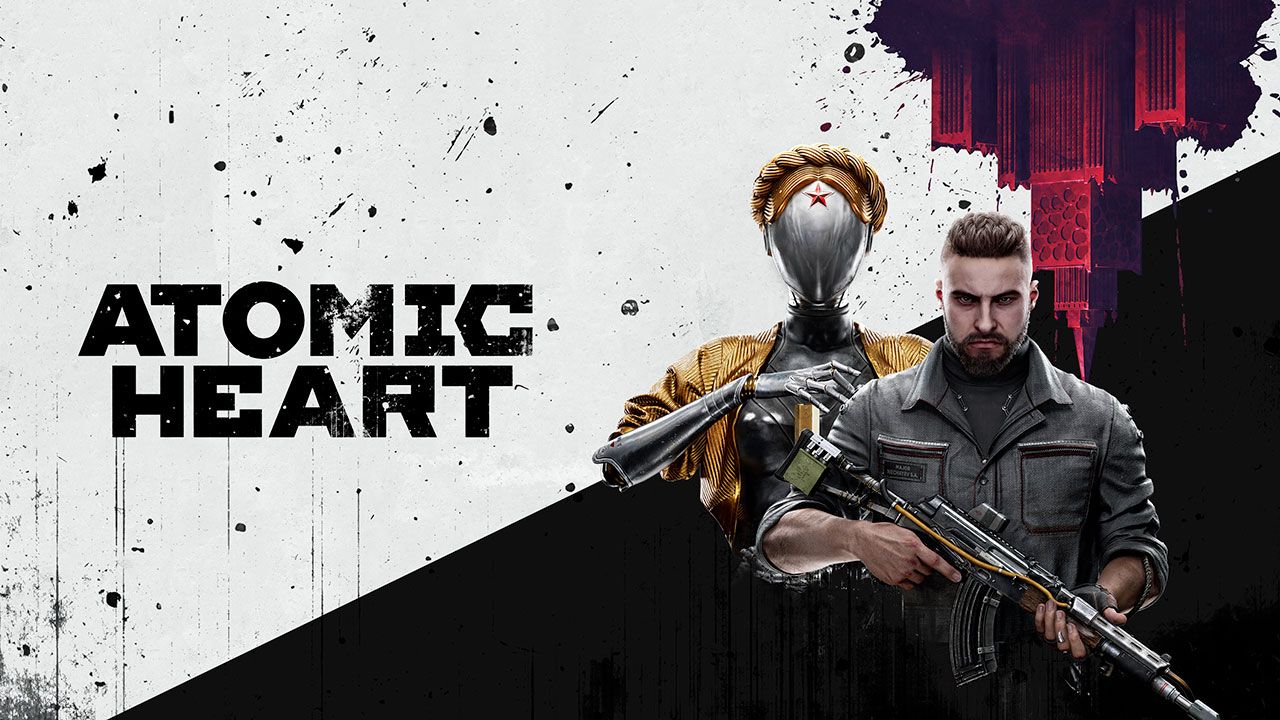You'll love it if:
- You love weapons and special abilities
- You enjoy a mysterious plot with big ideas
- You love a colorful and well-designed game with enhanced graphics and performance:
Not for you if:
- You don’t like exploring and collecting materials
- You are not a big fan of first person shooter games
Finally, Atomic Heart, the game we’ve been eagerly anticipating, has arrived! Mundfish, the video game company , has truly delivered with their first title after five years of hard work by their incredibly talented developers. As the company was only founded in 2017, I found it particularly fascinating to research and write about without any pre-existing frame of reference. The company is already making a name for themselves with their commitment to producing high-quality games. Despite this initial challenge, my findings led me to believe that Mundfish has the potential to become one of the rising stars in the gaming industry. Before you dive into this review, I want to mention that this is my very first game review. I hope that my thoughts and observations will help you decide if you’re ready to dive into this captivating experience.

TL;DR
Atomic Heart is a first-person shooter game with great ideas, but the plot execution could have been better. The game features impressive graphics, performance, and boss fights, but the combat can be repetitive, and the protagonist is hard to connect with.
All images in this article are in-game screenshots taken from the PlayStation 5 version of Atomic Heart.
Atomic heart : Presentation
I was actually very curious about how the gameplay would integrate with the story before the game came out, as these sorts of games often prioritize combat over story. After playing, I found it to be a nostalgic blend of my favorite games. The game had a Bioshock-like feel to it, with a slow start followed by a turn of events that kicked off the story. As I played, I recognized several aspects of the game, such as the colorful yet creepy atmosphere, the ability to cast powers, and engage in conversations. All of these characteristics made me realize that the game developers were clearly inspired by Bioshock. In addition, the game’s story, impressive cinematics, and thrilling boss fights also reminded me of Wolfenstein, another game that uses an alternative history setting where the Nazis conquer the world.
Atomic heart combines an array of impressive weapons and superpowers with challenging battles against both robots and humans. While the game has great ideas in terms gameplay and story, the plot could have been better executed. The various dialogues make it difficult to keep track of which side we’re playing on. In some ways, it seems that everyone has evil intentions, which makes it hard to follow the character’s beliefs. While playing the game, I also struggled to follow crucial to the story dialogues that could have provided clarity to the main story. The issue was that the fights, dialogs, and music often overlapped, making it challenging to hear and understand the dialogue
Atomic Heart: Story
The story takes place in the 1950s where the USSR is at the heart of the next technological revolution. A scientist named Dmitri Sechenov created a new material called Polymer which enables a neural network called ‘Kollektiv’ to connect people and devices like never before. With the inauguration of the latest version of “Kollektiv” and the unveiling of a new device called THOUGHT, which allows humans to control robots, things take a turn for the worst. An insider sabotages the algorithm which sends the robots into combat mode against everyone and turns this technological advancement into a nightmare.
At the start of the game, we find ourselves at Facility 3826, a top-secret military base in the USSR. Our character is P-3, a mysterious figure about whom we know very little. Immediately, we can discern that he is not much of scientist and lacks intelligence. He comes off as an overbearing military man who complains continuously. His constant gullibility and susceptibility to manipulation can be frustrating, making him seem like an idiot who lacks any real independent thought. This, in contrast to other games, made it difficult for me to connect with him as the protagonist, as he seemed like a gun-toting man who destroys everything without thought. As the story progresses, however, we begin to appreciate him more, particularly through his relationship with Charles, an intelligent system implanted in P-3’s left hand that grants him supernatural powers and abilities. Ultimately, it is the dynamic between P-3 and Charles that elevates the game and makes it a more compelling experience.
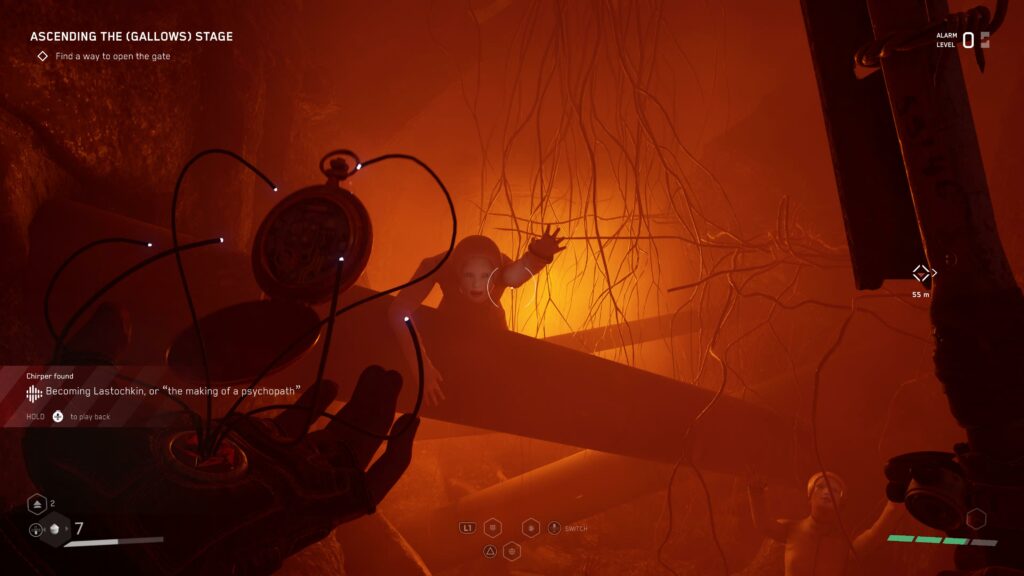
Atomic Heart: Exploration
The game’s pacing initially feels slower than expected, particularly after watching the trailer. I believe the reason for this sluggishness is the absence of a “run” button. Upgrading movement speed is the only way to move faster, which can be a frustrating limitation. The world design combines both open world and linear gameplay, but the open world aspect feels underutilized. Despite introducing an impressive map, the main story keeps the player mostly confined indoors for linear missions. Additionally, the use of a map is unavailable when inside buildings. Another tedious feature is the use of terminals, which control cameras in specific sections of the map. While it’s an interesting concept, I found little use for them other than opening a few doors.
Saving progress in the game requires finding save rooms, which also contain Nora machines to craft and upgrade weapons. While this system is cool, it worked against me during my playthrough. I encountered bugs such as getting stuck in an elevator or experiencing crashes, forcing me to redo sections of the game.
Exploring the game world is made more enjoyable by the ability to collect resources using a magnet embedded in the player’s robotic hand. This feature saves time by avoiding the need to manually search every drawer. Additionally, a scanning functionality allows players to track surroundings and enemy weaknesses. However, the scanning process is not instant and requires precise aiming, which can be challenging using a controller. Instead, I often opted to use different weapons until I found the one that dealt the most damage.
Finally, the game features enjoyable puzzles mainly encountered when opening doors. Although puzzles aren’t a significant aspect of the game, they provide a welcome break from the focus on combat and forward progression.
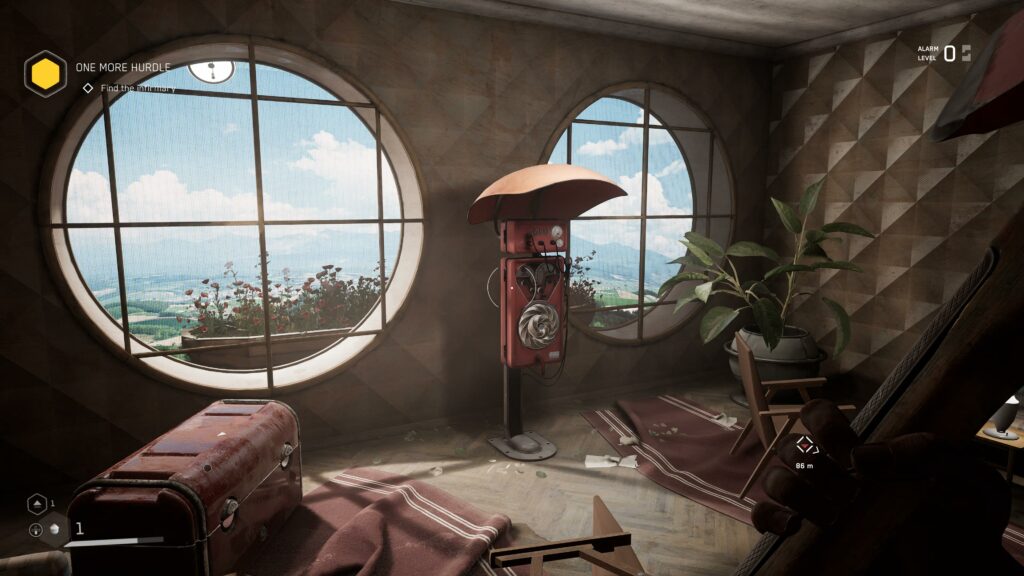
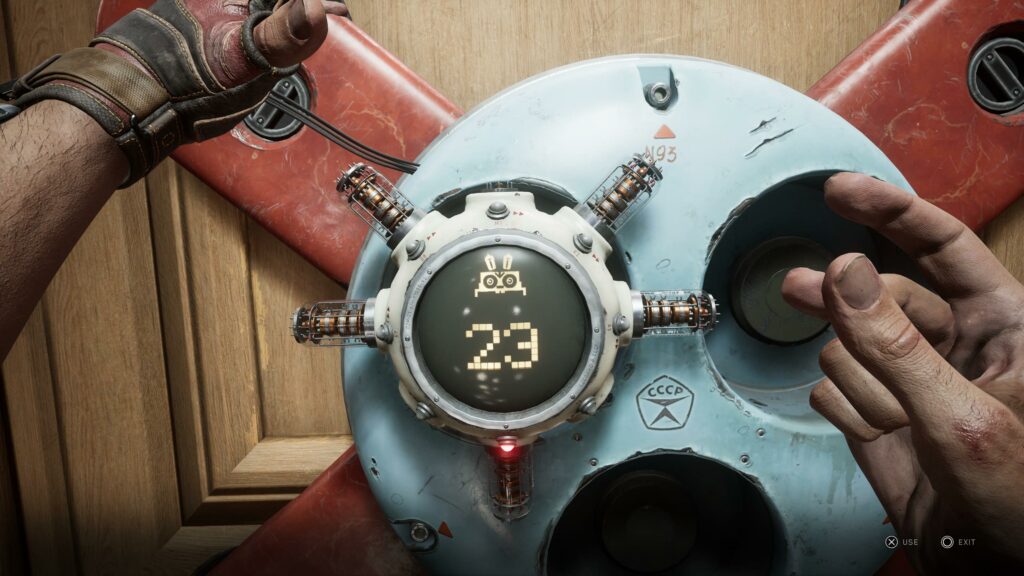
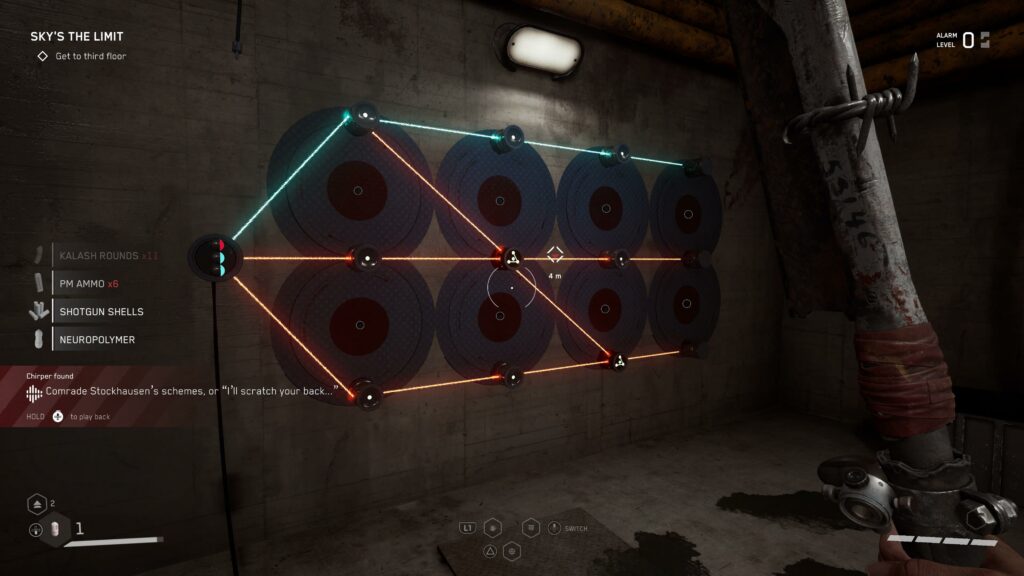
Atomic Heart: Combat
The combat in the game can become repetitive, especially in the beginning when you’re facing a limited number of enemy types. The player combines melee weapons with firearms, but ammo can be quickly depleted. As an alternative, energy weapons can be used and recharged with energy obtained from hitting enemies with melee or other firearms. Charles powers can also be utilized in combat, but they don’t deal damage and are primarily used for crowd control, which differs from other games such as Bioshock.
Initially, I found managing weapons during combat overwhelming because it was done through the weapon wheel. You might struggle with understanding how to use and equip cartridges, which are consumables that transform normal bullets into elemental damage. Additionally, you have to be mindful of the limited amount of things I could equip during combat and make strategic choices. Accessing extra storage was only possible through Nora machines.
Upgrades are focused on 2 major things: Upgrading Charles, your left hand companion and upgrading your weapons.
To upgrade Charles and your abilities, you must collect neuropolymer while exploring and defeating enemies. Similarly, upgrading your weapons requires obtaining different metals by killing and exploring. One clever design feature allows you to return a certain ability or sub-ability and reclaim your spent materials, enabling you to change your combat style without incurring any losses. The game also incorporates parkour to a certain extent, adding an enjoyable element to exploration. While it’s not as advanced as what you would find in games like Dying Light, it’s still a welcome addition and enhances the overall experience.
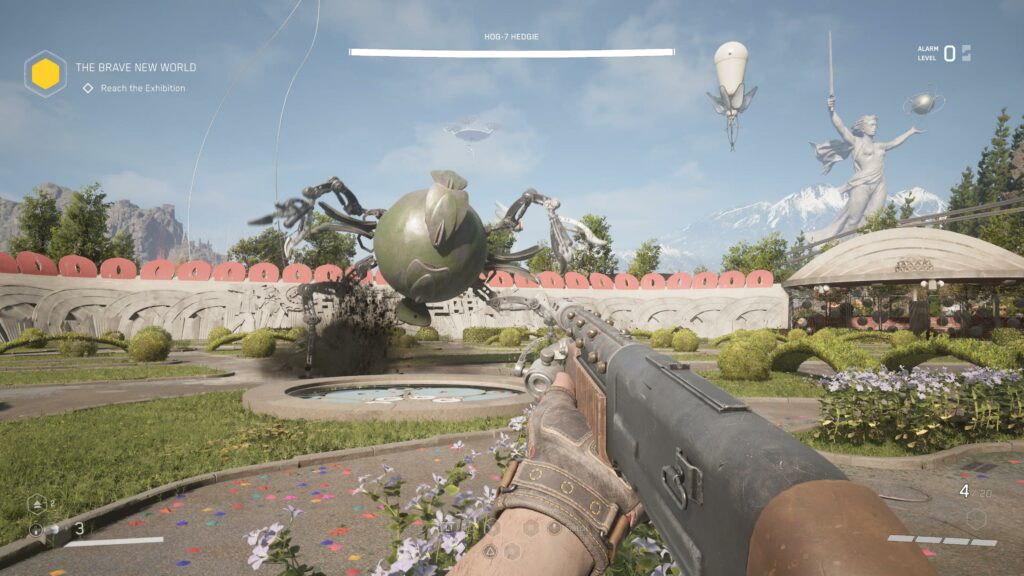
Atomic Heart: Visuals
The visuals in the game are absolutely stunning! The rich colors, exquisite lighting details, and superb enemy movements all contribute to a feeling of living in a peaceful utopia that is suddenly shattered and transformed into a creepy, dramatic world. I appreciated the absence of minimaps and other markers on my screen, which allowed me to fully immerse myself in the fantastic environments. However, I did find the lack of destructibility frustrating. My weapons could only destroy robots and humans/monsters, while car windows and other objects in the street remained invincible. As for the cinematics, they were breathtakingly dramatic and tense, perfectly complemented by the incredible soundtracks. I played through the game in English, and they delivered outstanding performances that made me feel like I was watching a movie.
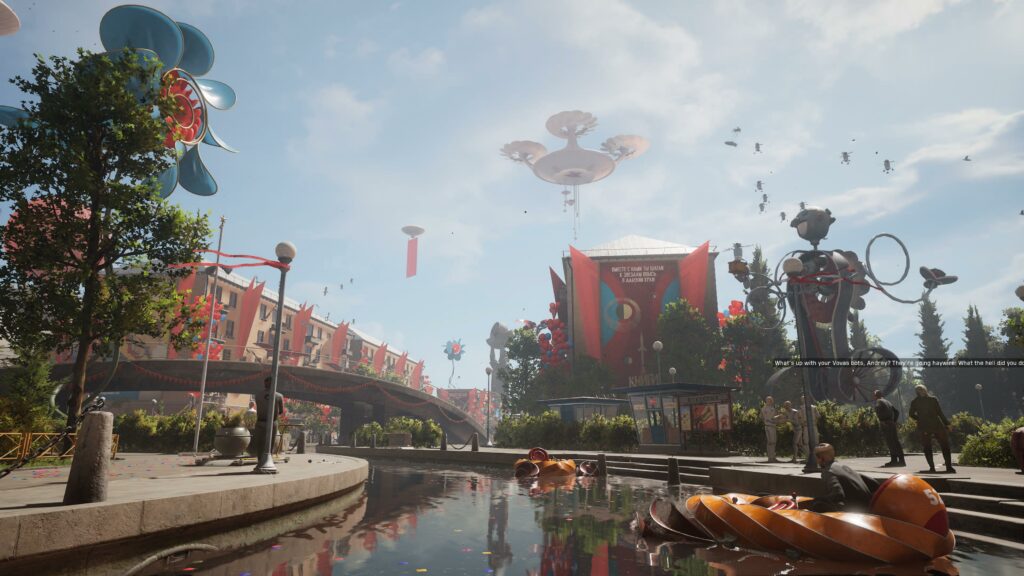
Atomic Heart: Conclusion
Although the game features stunning visuals and an exciting first-person shooting experience set in an alternative history during the Soviet Union’s reign, it can feel a bit chaotic at times, as the developers tried to incorporate too many ideas instead of focusing on refining them. As the saying goes, too much of everything is not always a good thing. Despite this, the game makes a valiant effort to be enjoyable. On paper, it boasts a wide variety of weapons, well-designed enemy mechanics, and stunning effects. I had a lot of fun exploring the vast maps, upgrading my character, and improving my weapons. Despite its flaws, I still highly recommend the game, as it’s evident that the developers put a lot of effort into making this experience enjoyable!
Big thanks to AVE for providing us with the review copy!
